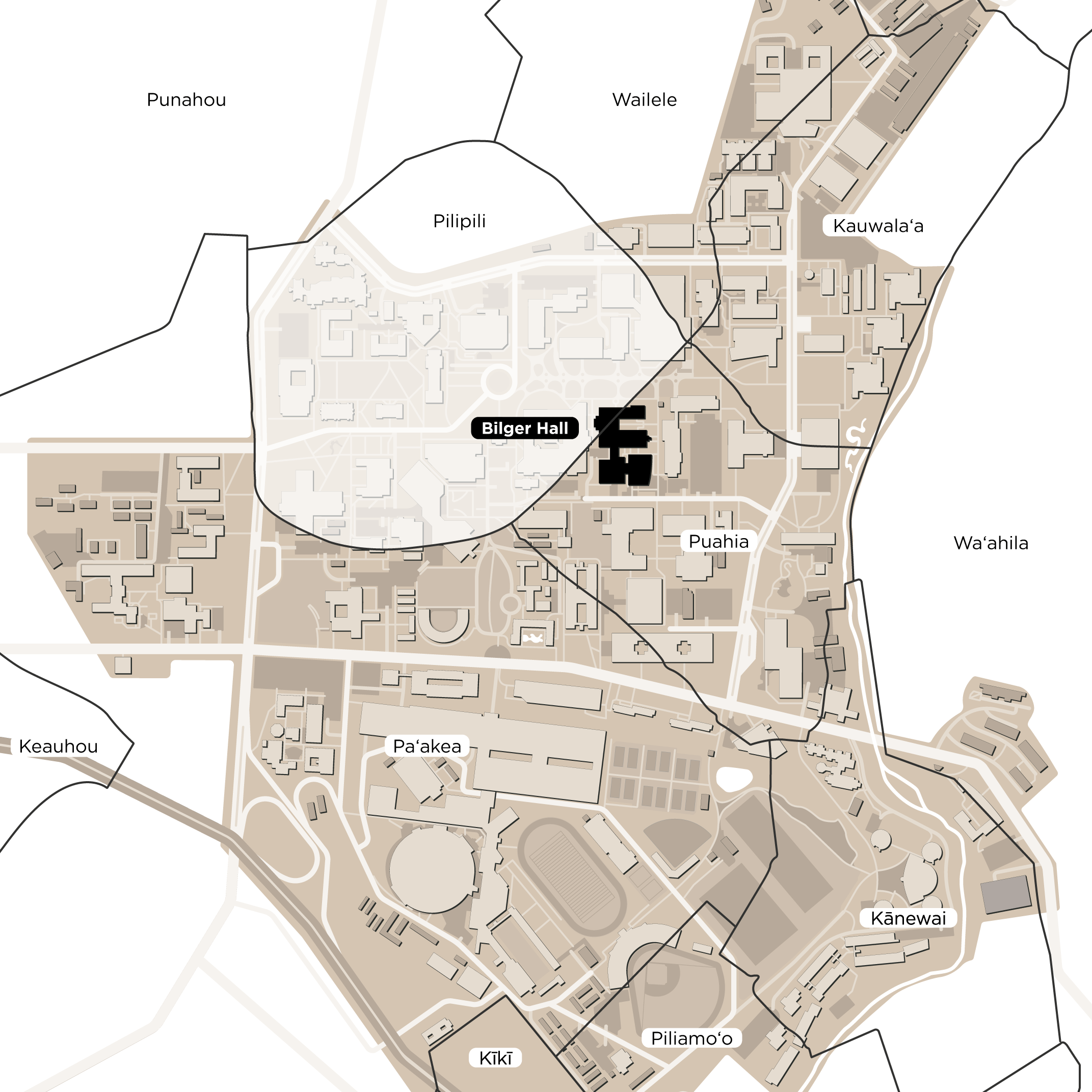WELCOME TO
LEONORA BILGER HALL
The building is named after Leonora Bilger, a noted chemist and the dean of women and chair of the Chemistry Department from the 1930s-50s. Today, Bilger Hall houses most of the Chemistry Department, though a variety of subjects—from oceanography to psychology—are hosted in the lecture classrooms in the main building.
LOCATED IN THE ‘ILI OF
ʻĀina Momona i ka Pālolo, Land Enriched by the Sweet Clay
While there is no direct translation of Pilipili, the name may be derived from the word pili, which means “to stick.” The grass of the same name is often left at ahu (mound, shrine) in hopes that knowledge would “stick” or “cling.”
-
Pilipili (sticky) are the lands that most of the upper UH Mānoa campus is situated on. This area was known for its sweet edible clay, known as pālolo. Pilipiliʻula (also known as mānienieʻula) was a native grass that grew abundantly here.
According to Emma Nakuina, the large loʻi (wetland farms) that this area was known for were constructed by the chiefess Kamanele, daughter of Kuakini and niece of Kaʻahumanu. Much of the water for the loʻi was diverted from the springs in the neighboring ʻili ʻāina of Wailele. When other aliʻi (chiefs) questioned Kamanele for her proactive development of these lands, she would tell them: “As Kuakini didn’t have a son, I must be both keikikane (son) and keikawahine (daughter).”
VIDEO COMING SOON
VIDEO COMING SOON
ORIENTING TO THE LARGER ENVIRONMENT
BILGER HALL IS PAIRED WITH WAʻAHILA
While Waʻahila is the name of the ʻili and mountain range, some famous moʻolelo tell of Kauawaʻahila or the rain of Waʻahila.
-
One version of this story tells of Kauawaʻahila and his twin sister Kauakiowau who are born of chief Kahaʻakea in the Kaʻala Mountains. After their mother’s death, their father remarries in hopes the children can have a caring maternal figure. However, their new step-mother quickly grows jealous of the children’s beauty and persecutes them when the father isn’t looking. After Kahaʻakea leaves for a trip to Hawaiʻi island, the twins attempt to escape their step-mother, traveling around Mānoa. With the help of the moʻo Kakea, Wailele Spring is split to create the Kānewai and Punahou Springs. Here, the twins develop kalo fields and care for their vassals.
Their story captures how rain feeds the underground springs, while producing abundance for the people.
VIDEO COMING SOON
VIDEO COMING SOON
IDENTIFYING KEY VEGETATION & RELATING TO PLACE
KUKUI GROWS IN THE MĀNOA WATERSHED
Kukui trees are found across the islands and all around Mānoa Valley along the slopes of the Ko‘olau Range. The kukui nut is most famously used as lei and fuel to burn candlelight. Maybe because of this, the tree is also known as the “candlenut tree,” where the flames can be seen as a “beacon” or symbol of enlightenment, knowledge, and leadership.
-
Among its many uses, the kukui bark, flowers, and nuts have also long been valued for medicinal purposes and as dyes for cloth and tattooing.
VIDEO COMING SOON
VIDEO COMING SOON






